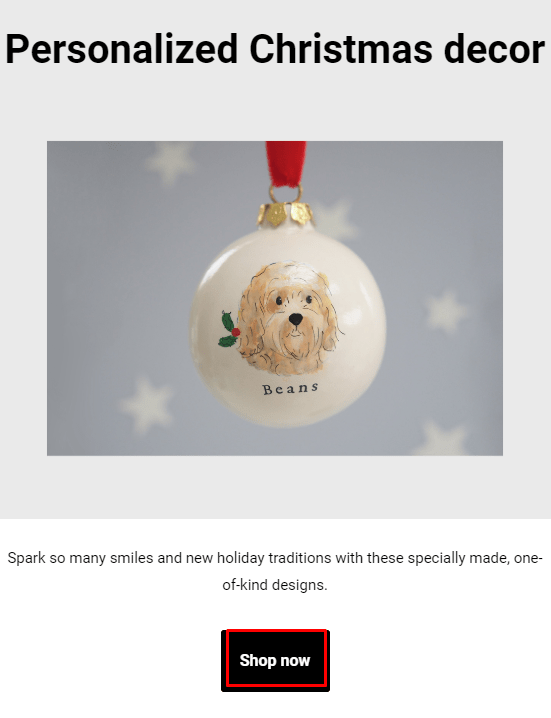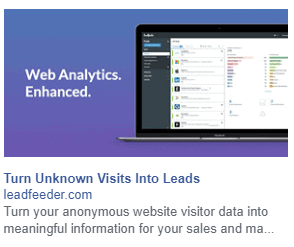The reason a brand or a company comes into existence is one and one alone: To cover a gap in the niche it belongs to. And, ultimately, turn everything – traffic, purchases, social media mentions, you name it – into profit.
This is true for any and all businesses, online, brick-and-mortar or both.
This is why, over time, various marketing tactics have appeared that promise to make brands see their numbers grow, starting from print marketing and telesales and going up to today’s most advanced platforms of email marketing and marketing automation for agencies, high-end brands, SaaS companies, eCommerce and everything in between.
But what happens when a business only has an online presence and there is no actual window to catch the consumer’s eye the traditional way? How can online businesses gain profit without blowing all marketing budget on Pay-Per-Click ads?
The only way to have results without spending too much money and without abusing your marketing team’s time is to use two digital channels that don’t need too much effort to convert, provided you know how to use them: Email marketing and landing pages.
Why do you need them both?
Let’s see this stat first:

The areas marketers test more, in order to increase conversion rates are the website (logical), and then the two areas we’re looking at, today: Landing pages and emails. And this has been the case for quite some time now.
So, let’s first explain why you need a landing page: Landing pages are key to acquiring new customers in a cost-effective way.
A landing page is specific and focused on the target a business needs to achieve at that point in time. It is designed specifically for what it needs to do and appeals to the impulsive nature of a prospect.
This means no links, a clear CTA, and colors that match your brand’s tone of voice, as well as your ads or promotional emails.
And then, you’ve got your marketing emails. Email marketing is the most cost-effective way to market a business and delivers a pretty high ROI.
And everyone uses email, some people more than just the one address. So, email marketing is now what door-to-door sales used to be. Only better, since it’s heavily personalized and ESPs now make sure that there will be no “unwanted guests” in your inbox.
But how can you craft and use two of the best marketing tools and create one great marketing strategy?
Before we begin
Customers are the force that drives growth for each and every business, both online and offline and operating for customers is what all successful brands should do.
This means that the tools used cannot seem to be separate from each other-if an ad uses blue as the dominant color, so will the landing page and the promotional email that comes with that specific campaign.
This is why it’s very important to have studied your buyer personas very, very well and then set clear, achievable goals.
These two things will help you determine your KPIs first of all and secondly, they will give a boost to your CRO efforts, seeing as you’ll know how to implement the tools you need to use.
The fantastic headline
Or could it be “the fantastic subject line” instead?
A headline on a landing page or an email’s subject line is what will draw attention at first. This means that it will need to be informative but not too much and nowhere near spammy.
Avoid all caps, symbols like $$$ and words like “FREE” with way too many exclamation marks following the statement.
Here’s why:
This may be valid for web pages and landing pages, but the logic behind it is the same for email as well. Only the user can define what a “spammy” email is, but usually, it’s the emails that offer no value, that end up in the spam folder.
This is why you’ll need a very crafty and to-the-point headline or subject line, in order to keep your bounce rate or unsubscribe rate low.
Your visitors and your subscribers will need to know what they’re in there for within seconds of setting eyes on your landing page or email subject line, otherwise, they’ll opt-out.
And since there are billions of online businesses out there, using both email marketing and landing pages throughout their individual projects’ lifecycles, you cannot afford losing visitors.
The visuals and copy
Both a landing page and a marketing email need great visuals that will represent your brand tone and make your target audience feel like they’ve discovered exactly what they’re looking for.
Visuals should, more or less, be able to showcase what happens when a prospect becomes a customer. And not in just a picture, but in colors that match the feeling you’re trying to convey.
This is not enough, though. An image may be worth a thousand words, but if there’s no copy, you’re in for a nasty surprise. You’ll need copy that is no-nonsense and will be getting straight to the point, much like the subject line or the headline needs to be like. And it needs to match those as well. You can’t be all about a “Fantastic Offer” on your landing page headline or email subject line, only for your prospect to find none of that in the body copy.
The same goes for your CTA as well, seeing as it’s the most important thing on your email or landing page.
Here’s an example. I got this email in my inbox today:
The subject line talks about a personalized item. But what happens with the email body?
I’ve got a personalized suggestion in my inbox and a clear and simple CTA that matches and stands out from the rest of the email, in black and white, that tells me exactly what I need to do.
A CTA in an email can actually lead your prospect on a landing page. So, it will need to stand out with copy that will be simple and memorable and will separate itself from the other elements on the page or the email.
As with everything copy and visual-related, you’ll need to be super clear on the kind of action the user needs to take. “Sign up”, “Visit Page”, even “Take me there” or “I wanna know!”.
You need to use verbs in order to make your prospects take action.
The lead magnet
You can have the best visuals and the most compelling copy and it still won’t be enough if you’re not offering something.
You see, people are not exactly willing to give up their personal information in exchange for nothing. This is why you need to give them something to keep them going.
This something is called a “lead magnet” and can be giving a little taste of what your product or service can do for the prospect itself.
It doesn’t need to be something too big. Actually, it needs to be as big as the data you’re asking your prospects to give up.
For example, I logged onto Facebook and clicked on this ad right here:
Which redirected me to this landing page here:
All the page needs from me is my email, especially seeing as they’re giving me a free trial that requires no additional data, such as credit card details.
More data, like company name, would’ve been unnecessary, seeing as all I need is to sign up for the free trial.
So, a free case study is something that calls for more data. It’s time-consuming, in terms of being created, needs a lot of effort and the prospect is getting something that would otherwise be very costly.
A discount code or a free trial, on the other hand, is neither time-consuming nor costly.
So if, for example, you’re a video marketing software company and you want your prospect to sign up, then offer them a freebie with a case study of the best Kickstarter videos.
This will make your prospects feel much more comfortable when it comes to sharing information, as they’re getting something in exchange for their name and email.
All in all
All businesses need landing pages and email marketing in order to get more quality leads that will be interested in their products and will turn to loyal customers.
But by applying this principle to online businesses alone, it’s easy to see that those two tools are most needed, as they can serve as a “window” to the actual services of each online brand.
And while landing pages and emails are two very different tools, they need to have two key elements: Clear content and a reason for the prospects to hear you out are essential in both email marketing and landing page creation.
Of course, an honorable mention needs to go to mobile optimization, as mobile is gaining more and more ground in email opens and landing pages alike.
Author Bio:
Téa is a content writer working for email marketing software company Moosend and an obsessive writer in general. In her free time, she tries to find new ways to stuff more books in her bookcase and content ideas – and cats – to play with.


